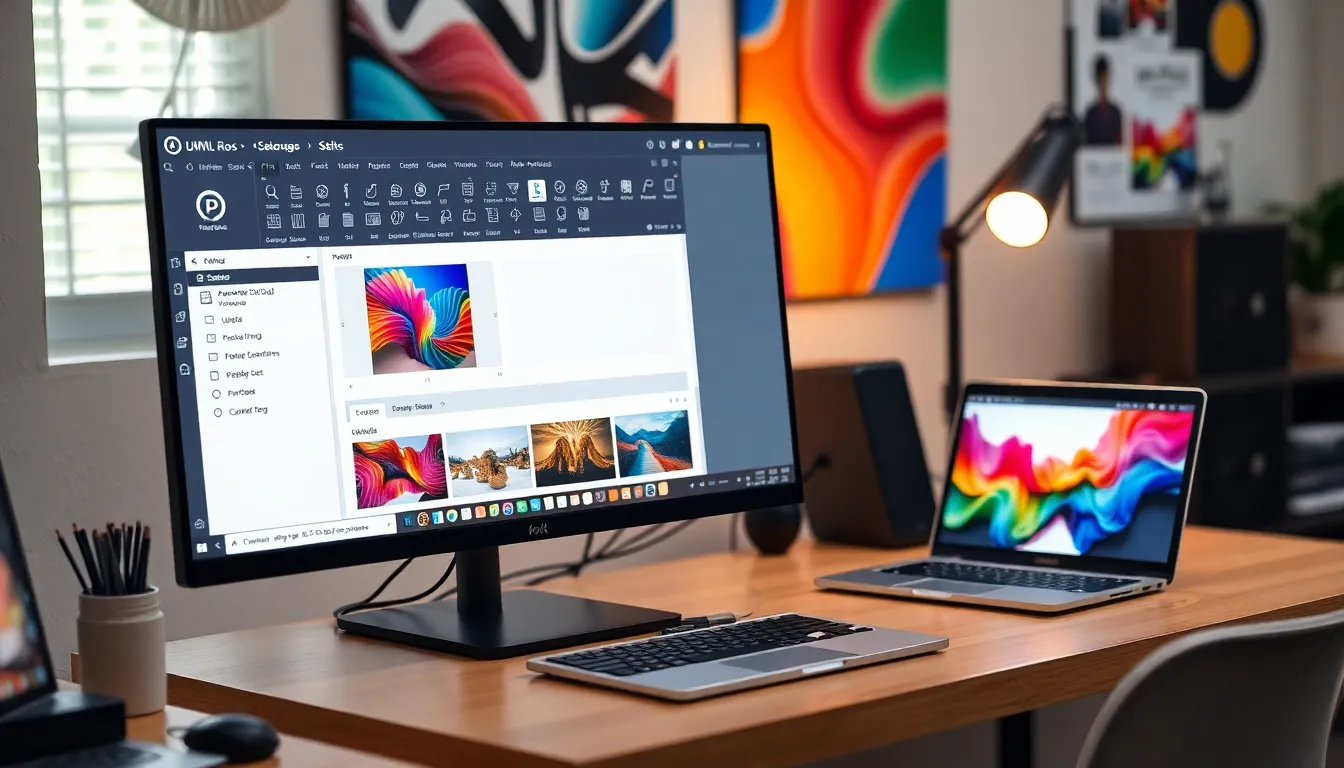In the digital world, images are the eye candy that keeps visitors glued to a website. But what happens when those mouthwatering visuals turn into slow-loading nightmares? Image optimization for the web is the secret sauce that transforms sluggish sites into lightning-fast experiences. It’s like putting a turbocharger on your grandma’s old car—suddenly, it’s a joyride instead of a snooze-fest.
Not only does optimizing images improve load times, but it also boosts SEO, ensuring that search engines take notice of the delightful content you’ve created. With the right techniques, he or she can make images pop without sacrificing quality. So buckle up and get ready to discover how to keep your site speedy and your visitors happy, all while looking like a pro in the process.
Table of Contents
ToggleUnderstanding Image Optimization for Web
Image optimization plays a critical role in enhancing website performance. Improved load times and user experience result from properly optimized images, making them essential for any website.
Importance of Image Optimization
Image optimization directly affects site speed and user engagement. Faster loading images retain visitors and decrease bounce rates. Additionally, search engines favor optimized images, which can improve a website’s SEO ranking. Higher rankings lead to increased visibility and traffic. Ensuring images load quickly also contributes to the overall user experience, leading to higher conversion rates. Prioritizing this process supports both aesthetic quality and functional efficiency, benefiting website performance.
Common Image Formats and Their Uses
JPEG, PNG, and GIF are common image formats used on the web, each serving distinct purposes. JPEG is widely used for photographs due to its ability to compress file sizes without significant quality loss. PNG offers better quality for images with transparency and sharp edges, making it ideal for logos and graphics. GIF is best for short animations or graphics with limited colors. Understanding these formats allows website creators to choose the most effective options for their visuals, thereby optimizing images for various needs.
Techniques for Effective Image Optimization
Image optimization involves several techniques that enhance both quality and performance. He or she can implement compression methods and utilize responsive images effectively.
Compression Methods
Lossy and lossless compression methods work to reduce file size while maintaining visual quality. JPEG format often employs lossy compression, making it suitable for photographs. PNG, on the other hand, offers lossless compression and is ideal for images requiring transparency. Tools like TinyPNG and ImageOptim provide efficient compression services. Testing different compression ratios ensures the best balance between image quality and file size.
Responsive Images
Responsive images automatically adjust to fit varying screen sizes, improving user experience. HTML’s srcset attribute aids in serving appropriate image versions depending on the device’s resolution. Utilizing CSS media queries further enhances this adaptability. Scaling images appropriately prevents oversized files from affecting load times. Optimizing image display improves performance across all devices, ensuring consistent engagement.
Tools for Image Optimization
Several tools exist for effective image optimization, enhancing site performance while ensuring high-quality visuals. These resources can streamline the process of reducing file sizes without sacrificing quality.
Online Tools
TinyPNG compresses images efficiently, reducing both PNG and JPEG file sizes. This tool maintains image clarity while performing lossy compression, perfect for web use. Another option, ImageResize.org, offers batch processing, enabling users to optimize multiple images simultaneously. Additionally, Squoosh provides a simple interface to experiment with different compression settings, allowing quick visual comparisons. Overall, these online tools cater to various user needs, making image optimization accessible.
Software Solutions
Adobe Photoshop remains a powerful choice for image optimization. With its “Save for Web” feature, users can easily control file size and format while ensuring quality. GIMP, a free alternative, also offers robust image compression options suitable for various formats. ImageOptim is another software that focuses on lossless compression, providing fast results for Mac users. These software solutions empower users to manage their image files effectively, improving overall web performance.
Best Practices for Image Optimization
Image optimization significantly enhances website performance and user experience. Implementing best practices ensures faster load times, improved SEO, and better accessibility.
SEO Considerations
Optimized images play a crucial role in SEO. Image file names should be descriptive and relevant to content for better indexing by search engines. Alt text also needs to contain targeted keywords; this enhances image visibility in search results. Additionally, image size directly influences site speed. Large images can slow down loading times, negatively impacting user experience and SEO rankings. Tools that compress images while maintaining quality facilitate the best balance between speed and appearance. Incorporating structured data for images helps search engines understand context, further enhancing optimization efforts.
Accessibility Benefits
Image optimization boosts website accessibility for all users. Descriptive alt text provides context for individuals using screen readers; this practice ensures that visually impaired users can comprehend image content. Additionally, appropriate image sizes prevent slow loading times that could frustrate users with slower internet connections. Consistently optimized images contribute to a smoother navigation experience for everyone. Including high-contrast visuals also enhances readability, making content more engaging. By ensuring all images are responsive, users can enjoy the same quality experience across various devices. Ultimately, optimized images create an inclusive environment, fostering better engagement and user satisfaction.
Conclusion
Image optimization is a crucial aspect of web development that shouldn’t be overlooked. By enhancing load times and improving user experience, optimized images can significantly impact a site’s performance. As search engines increasingly prioritize fast-loading websites, the benefits of image optimization extend beyond user satisfaction to improved SEO rankings.
Utilizing the right tools and techniques can streamline the image optimization process. This not only ensures high-quality visuals but also fosters better accessibility for all users. By following best practices and staying informed about the latest trends in image formats and compression methods, website owners can create a more engaging and efficient online presence. Ultimately, investing time in image optimization pays off with increased visibility and traffic.




